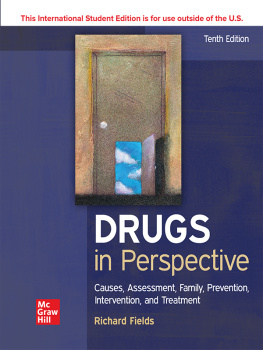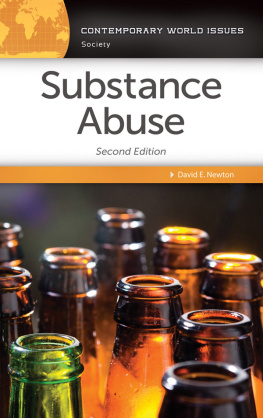
all things are poison and nothing is without poison, only the dose permits something not to be poisonous
Paracelsus
The father of toxicology
1493-1547
Document contents
Introduction
Sadly, generally a week does not pass without the issue of alcohol consumption or drug abuse appearing in the media. It is a fact that these issues are a part of our present day society. This has impacted on the approach of companies who recognise that society does not stop at a businesss front door. An employee who is chemically dependent does not arrive at his/her workplace and miraculously switch off their problem until they leave for home. Unfortunately, the individuals problem will enter the workplace and can have a major impact on business performance.
Whilst the number of people who may develop a serious drug or alcohol problem may be small, approximately 2% of drug users and around 4% of regular drinkers, the potential negative effect upon companies can be enormous. The negative effects can include a rise in absenteeism, poor punctuality, decrease in productivity and an increase in workplace accidents.
Thus a question organisations must ask themselves is:
What would be the impact on our business of a drug or alcohol related incident?
Damaged image?
Client/customer confidence?
Legal implications?
Financial repercussions?
A (2010 Home Office Crime Survey) report stated that almost one in ten adults between 16 and 59 had used drugs in the past year. Figures showed that Britons were the biggest consumers of cocaine in Europe. Nearly a million people were estimated to have taken the drug in the previous year. About 12,000 people were being treated for their use of powdered cocaine.
It is estimated that British industry loses 800 million per year due to drug abuse related sickness (National Treatment Agency). Absenteeism caused by alcohol misuse is estimated to cost up to 6.4 billion per annum in lost productivity through increased absenteeism, unemployment and premature death (Governments Alcohol Harm Reduction Strategy for England, Prime Ministers Strategy Unit).
This document has been developed to give organisations an overview of drug and alcohol issues and to act as an aid in the development of a drug and alcohol policy. It explains the relevant processes for screening and gives an insight into many of the issues that companies will face when introducing such policies.
Producing a policy. What are you trying to achieve?
The policy is your formal statement of intention. It should clearly state the rules and procedures for dealing with the issues of substance misuse. It must be consistent with your other company employee guidelines and contracts. But try not to complicate issues.
You need to consider:
Who does the policy cover? For example, some organisations differentiate between employees who carry out safety related tasks (sometimes referred to as safety critical tasks) and those who fulfil administrative roles.
Your compliance with any legal requirements.
Giving support to your managers and supervisors to deal with substance misuse in the workplace.
Demonstrating due diligence with regard to health and safety.
Establishing clear guidance for dealing with misconduct as a result of substance misuse.
Raising awareness amongst employees to the potential effects of drugs and alcohol, alongside the potential impact upon individuals, in the workplace.
Will the policy be supported by the introduction of a testing regime?
Not all organisations are the same size or operate in the same environment. Thus a company that operates in safety critical industries may have differing concerns (and sometimes differing legal requirements) from those in an office based environment. Therefore you need to consider the possible impact of a drug or alcohol related incident upon your particular organisation. Possible effects include:
Damaged image.
Client customer confidence.
Legal implications.
Financial repercussions.
A major issue of the policy is whether it follows the principle of carrot and stick? This relates to whether or not you offer assistance to those employees who come forward voluntarily with drug or alcohol problems. However, this should be supported by a tough stance such that employees who are found to be in breach of the companys policy (which is normally established through a testing regime) may face dismissal from the company.
If offering support, then the policy should clearly state the nature and extent of support available from the company.
It is important that the policy clarifies what would be deemed inappropriate or unacceptable. Examples include:
Attempting to work whilst having alcohol and/or drugs in the system.
Driving company vehicles whilst having alcohol and/or drugs in the system.
Selling or possessing illegal substances.
Sickness absence due to undisclosed drug and/or alcohol problems.
During the development stage it is vital to consult with employees and their representatives, including trade union officials. Consulting with your employees will not only ease a policys introduction but will also reduce employees concerns thereby reducing the level of resistance.
The policy should support your companys commitment to health and safety, highlighting the potential dangers of substance misuse to employees and the impact on the organisation.
When dealing with the management of incidents and discipline you will need to clarify the responsibilities applying to staff, supervisors and managers. The document needs to explain the relevant processes and who should follow them.
If assistance is offered to an employee then the policy should provide the relevant information on where to seek advice and help.
Education can play an important part in enhancing the effectiveness of a policy. Thus it is essential to inform staff about the policy and how it will operate.
The company should also commit to the promotion of awareness in respect of the dangers of drugs and alcohol.
It is important to provide specific training for managers and supervisors so that they are confident in recognising the effects of drugs and alcohol within the workplace. Ultimately, it will be the frontline managers and supervisors who will oversee the operation of the policy. They will need to understand the reasons for its introduction, the processes that are to be introduced and the signs and symptoms of alcohol and drugs in affected individuals. It cannot be taken for granted that they are already very familiar with these things.
If a policy is to be supported by a testing regime, then a decision must be made on what tests will be adopted.
Some organisations have taken a zero tolerance approach with regard to the consumption of alcohol, thus minimising any safety risk. e.g.:
Not to consume alcohol whilst at work, during breaks in the working day (including meal breaks spent away from the company premises) or if on call which might require the individual to work for the company at short notice.
Neither to buy alcohol whilst at work nor to bring alcohol onto the company premises. (Premises also includes company vehicles).
To limit consumption of alcohol prior to the commencement of work.
To avoid consuming alcohol outside of work hours whilst wearing a companys uniform or other form of company identification.
When discussing alcohol a decision will need to be taken on the setting of a company limit for the testing process. Education should sit high on the companys agenda.
Next page











